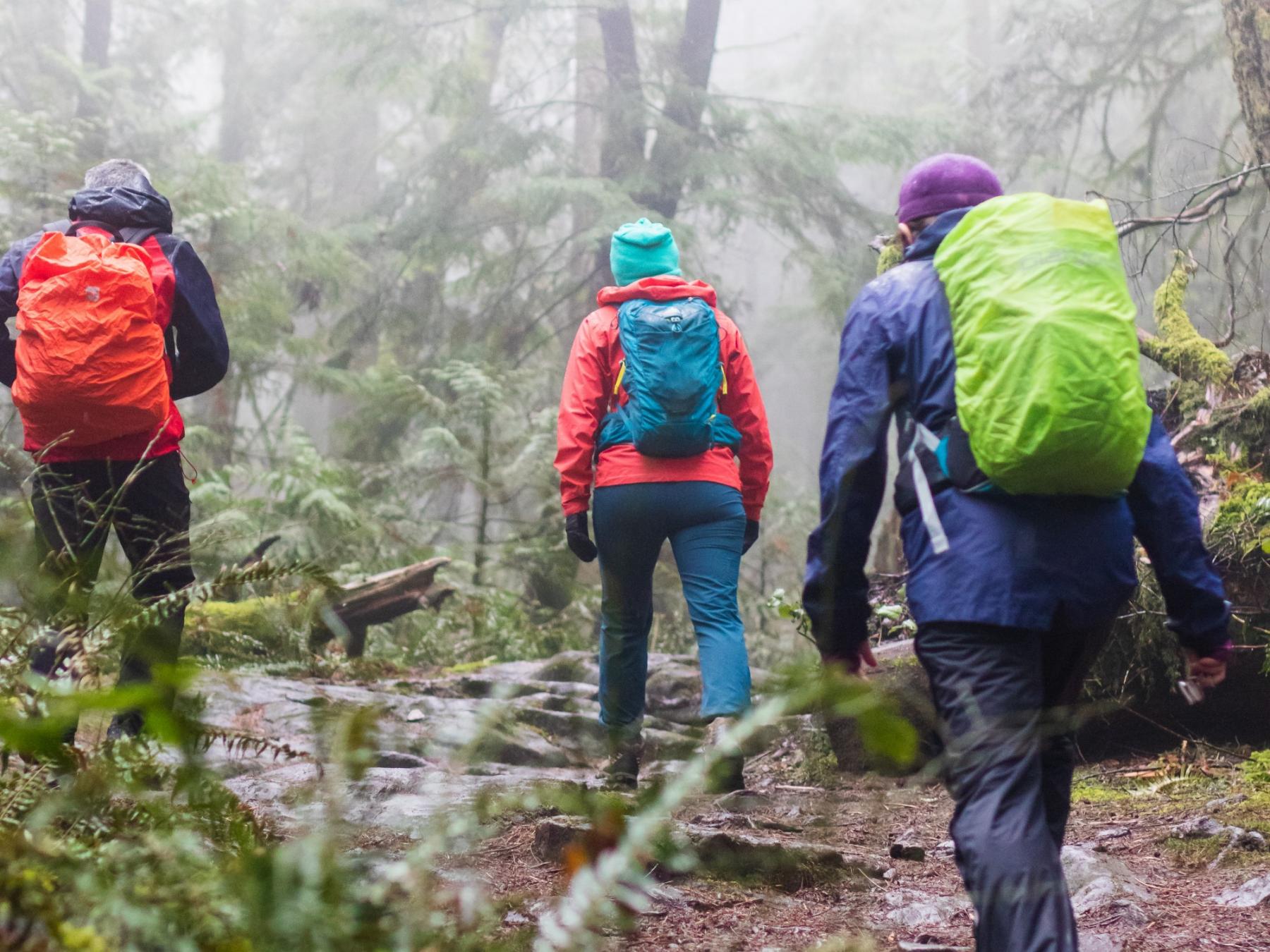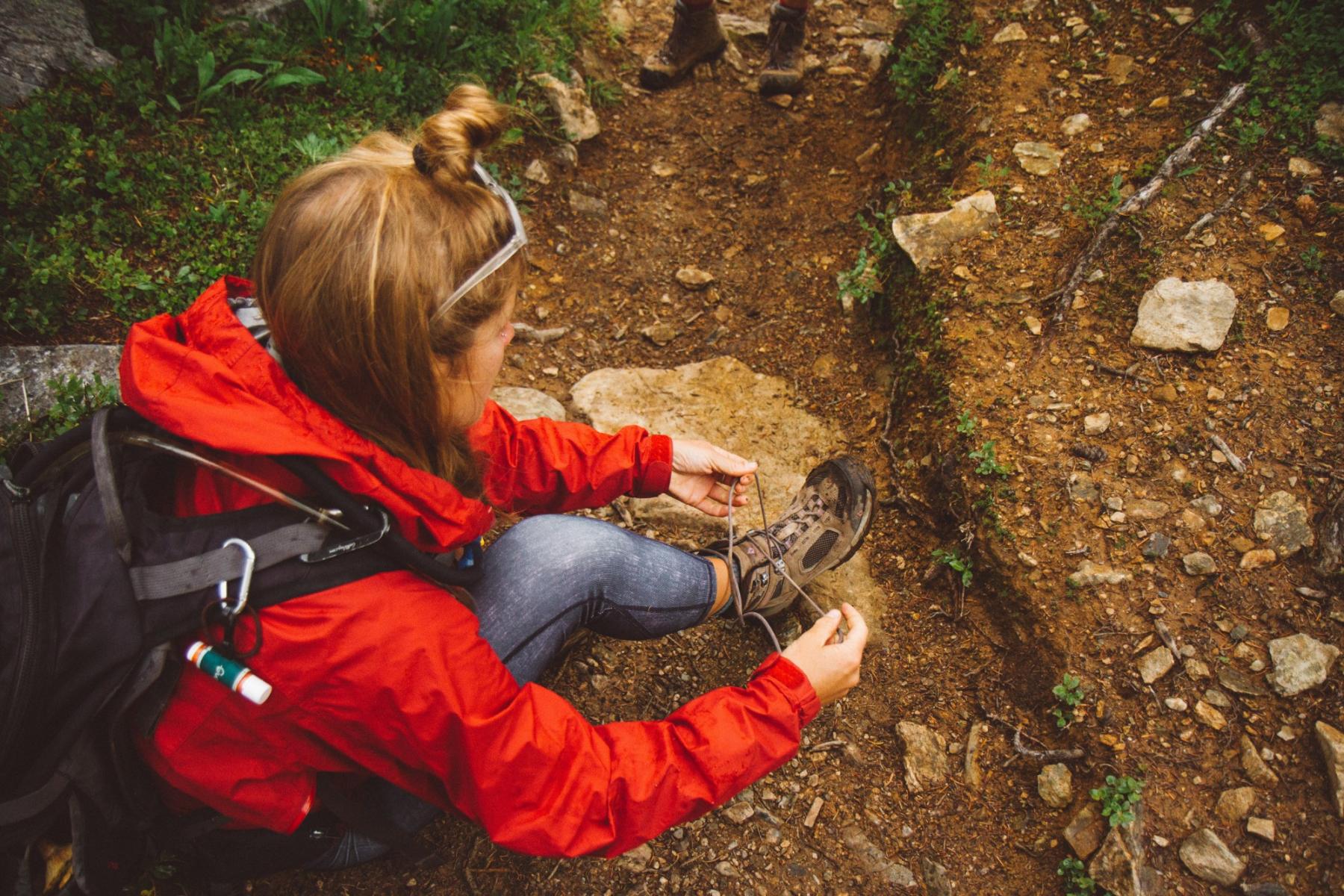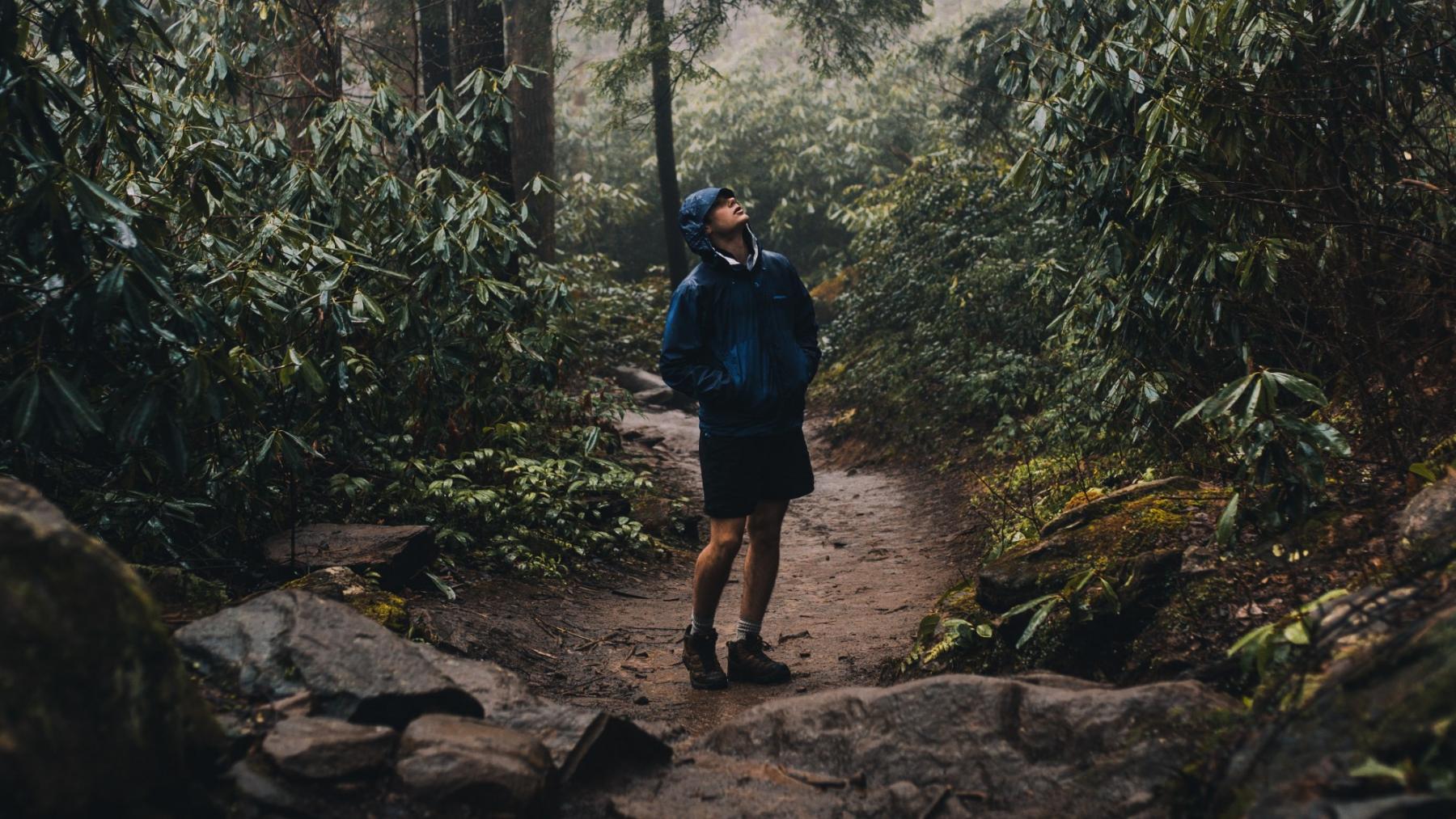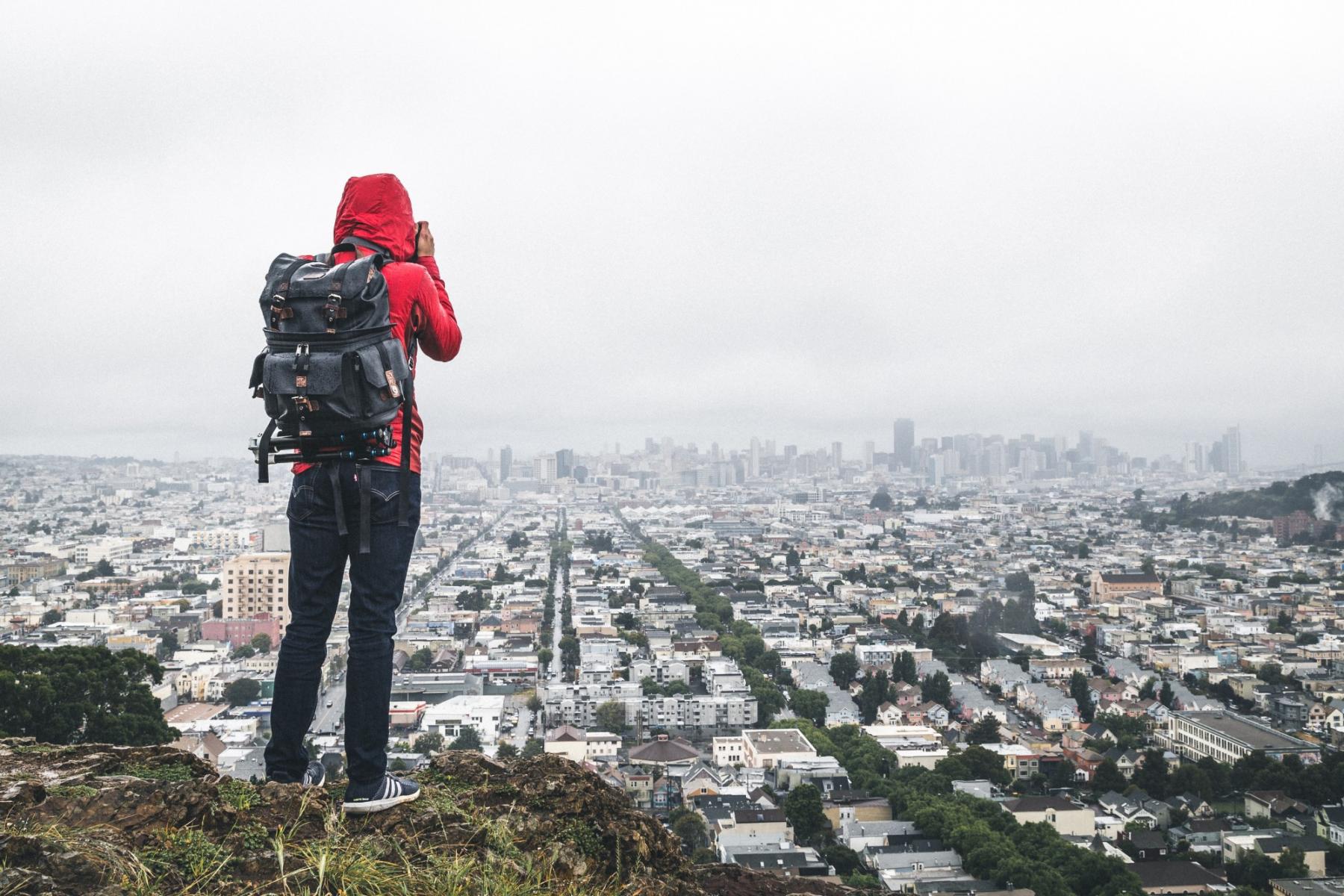
How to enjoy hiking in the rain if you never did it before. Tips from the (bad) weather experts
If you won't read beyond this paragraph, there are two main rules of hiking in the rain: One — it’s better not to get wet than trying to dry your clothes, and two — study the weather before and during the hike.
For those, who have five minutes for reading, we have collected a dozen other rules, tips, and advice on how to enjoy hiking in bad rainy weather. Well, at least try.
Why go hiking in the rain?
Yes, at first glance, it is better to wait for good weather. But it doesn’t always work out that way. For example, there was no rain in the weather forecast for the weekend on Wednesday, but forecasts may be wrong. You’ve already planned a hike and got caught in the rain.
It’s also easy to get caught in the rain while backpacking — multi-day hikes lasting several days or more. On such hikes, you need to move forward every day so you don’t stay in the mountains or forest for the rest of your life waiting for good weather and complete your trip. Your friends may be waiting for you at the finish or there may be the last bus back to civilization.
Sometimes you go on a small one-day hike on purpose in spite of bad weather because the next sunny day is only after a week.
In other words, getting caught in the rain is easy and sometimes you do it on purpose. So you can try to learn to enjoy hiking in the rain. After all, these hikes have some pros, not only cons. Remember them and repeat them when it rains:
- You may have spent another day at home or in the office, but you spent it outdoors — even in the rain. If you’re already on a long, multi-day hike — you’ll save a day of travel.
- There are likely to be fewer people on the trails when it rains. This is especially important for the most popular hiking areas like Zion National Park in the US.
- The air is much fresher and tastier during and after the rain. There’s more moisture in it. Breathing such air is more pleasant and easier than the heavy warm and dry air. Humid air is also better for your skin than dry air — well, that’s obvious.
- When it rains, the temperature usually also drops. Getting caught in the rain in the middle of summer when you’re exhausted from the heat on the trail looking for water is more of a success than misfortune.
- In rainy, cold and windy weather, your body uses more energy during physical activities, which means you burn more calories. There’s even a study by scientists about this.
- When it rains, nature becomes more alive: Rivers and waterfalls fill up with water, the magnificent rainbows only appear after rain or in places where there is water and other phenomena.
- For this reason, the rainy weather is good for photography. Bright daylight is generally considered the least successful among professional photographers. In contrast, photographers love twilight, sunrises, and sunsets, as well as fogs, wind, scattered clouds, and other natural phenomena.
- After all, it may end up raining sooner than you expected. Most likely, you canceled a couple of hikes because of the heavy rain in the forecast, which was actually light and lasted 1-2 hours instead of the promised six hours.
We've collected enough reasons. Hiking in the rain can have about a dozen pros — in my opinion, not less than hiking in normal good weather.

Photo: Greg-rosenke / Unsplash
How to enjoy hiking in the rain?
Successful hiking in the rain depends on many factors and their relationship to each other. Let’s go over them all:
Right mindset
This is the first and most important thing. If you don’t have a positive attitude, even a waterproof jacket won’t help you.
In my experience, the good mood in the hiking can change even in sunny and dry weather, because of the different reasons: it is physically difficult hiking, you took a little food with you and became very hungry, you lost your way, and so on.
What can help to keep the mood is music, for example. If you’re with friends on a hike, tell each other funny stories. Be creative.
Think also about what awaits you after the hike — a cozy armchair or couch at home in the warmth and comfort, much more food than you have in your backpack, the opportunity to share stories and photos from this great hike with friends on social networks, and so on — all this will help to spend the day in the rain.
But, of course, try to enjoy the hike. Keep in mind all of its pros that I listed above.
Clothing and shoes
First, your head needs to stay dry. In case you do not have an umbrella, do not forget to take a hat with a wide brim or a cap. It is better that it is waterproof.
Of course, you will need both a waterproof and windproof jacket, but it does not always work. In very heavy rain it is better to use a rain poncho, a wide and shapeless clothing that cover you completely and that have been used by the Native American people. It should be also water- and windproof.
Dress in several layers, the first being sweat-layer, and the second warming. In non-tropical latitudes, rain in most cases is accompanied by a chill. It will be many times colder in wet clothes than in dry, so once again — it is better not to get wet.
Waterproof and windproof pants are as important as a jacket. They get wet easily even if you walk under an umbrella, because rain and wind usually come at an angle, not vertically.
Take a second extra set of clothes with you that will always stay dry. You’ll change it in case you get wet and anyway during multi-day hikes and for sleeping. Put it in a plastic zippered waterproof bag inside your backpack.
Wear waterproof hiking shoes with a breathable Gore-Tex membrane or even rubber boots for small walks on uncomplicated trails. Keeping your feet dry and warm is even more important than having a good waterproof jacket. To keep water from going into the low-top shoes, also use special gaiters for hiking.
For any hike wear special hiking socks — they smooth out the friction of the foot on the boots, especially if it is a new pair of shoes. For cold weather use warm socks.
Speaking of clothing materials, cotton and wool get wet faster and take a very long time to dry. Synthetic and fleece and other modern sports materials are the opposite. This applies not only to the top but also to the pants. Jeans are the worst clothes for hiking and travel, especially in the rain.

Photo: Holly-mandarich / Unsplash
Gear
If you take an umbrella, then better take a regular non-folding umbrella. Yes, it is uncomfortable to carry and it must be attached to the backpack in a special way, but a one-piece umbrella is more durable than a folding one. The latter will break under the strong wind gusts. That’s why a poncho and jacket are also better than any kind of umbrella.
The most important gear for hiking is backpack, map and tent:
- Usually, modern backpacks, especially for backpacking are waterproof, but still not 100% waterproof. So take a special backpack rain cover — a kind of rain poncho for a backpack — with which you can cover it as a whole and not think about things inside getting wet. These rain covers are usually quite good. Backpack covers are often included with the backpack itself — most likely, you will not have to find and buy them separately.
- Take some topographic hiking map (it’s always better to have it with you in addition to the phone and GPS) and put it separately also in a waterproof plastic case if you have one. Usually, the paper maps for hiking are sold in such cases. You will need to get the map often, do not put it far away in a backpack.
- Backpacking you will most likely need a tent. Usually, they’re waterproof too, but they come with different levels of protection — that is, how many millimeters or inched of precipitation a particular tent can withstand during a long rain before it starts to get wet.
Also, put all your gear, documents, and things — phone, camera, GPS navigator, map, and more — in plastic bags at the very bottom of your backpack, where it’s harder for raindrops to get in. Open your backpack and take things as little often as possible to minimize the possibility of raindrops getting into the backpack. And don’t forget about them when you put the backpack on the ground — it should be dry, not a wet surface.
Place (Terrain)
In general, flat forest trails — yes, rocky and steep mountain trails — no. It is very easy to slip on rocks. Anyway, if you do manage to move, your speed slows dramatically.
Never cross rivers and streams during rains or in a spring time when the snow melts on the tops of the mountains. They flood heavily. The water flow force increases many times. The river in dry weather and in the rain are two different rivers.
Also, choose a place for camping carefully, taking water into account. Put your tent not in the middle of the field, but under trees or other shelters in case it might rain, even if there is no rain in the forecast. But it’s also a two-way situation: water may run off certain surfaces at a certain angle — watch that you don’t get flooded.
Always consider the tides — pitch your tent on the shore in places with a small change in water level.

Photo: Blake-cheek / Unsplash
Time
In general, it rains more often in different parts of the world at different times and seaons. For example:
- In the climates of America and Europe, it is spring and a little less often fall. In winter, it usually doesn’t rain (but there are snowfalls). And, if rain happens in winter, it can be very dangerous because it can cause an avalanche. (Learn how to avoid a snowfall while winter hiking in the mountains.) It can also rain in the summer, but there is generally much less rain than in the spring and fall.
- There is a rainy monsoon season in Asia that you have probably heard of. In brief, it is the time of year when it rains every day (and all day) in a certain months. For example, in South Asia, the monsoon season runs from June through September. There is a rainy season in East Asia (mainland China, Taiwan, Korea, and Japan), too. It’s also a very humid time. And then, during the other months of the year, it’s always dry.
It is better not to go hiking immediately after the rain because everything in nature gets wet and dries within 1-2 days. The more difficult the route, the drier the weather must be.
The longer you walk in the rain, even in a waterproof jacket, rain poncho or umbrella, the more likely you are to get wet, so plan short half-day or day hikes rather than long ones if you know in advance that it will rain.
If you’re going on a multi-day hike, however, sometimes it’s best to wait in a tent or some shelter until the bad weather ends, especially if it’s raining really hard. If you see a good shelter from the rain, this is also a reason to use it, because it is possible that for the next 100 kilometers there won’t be any. But, at the same time, if the rain is light and you need to keep moving, on the contrary, keep going.
Take short breaks during the hike. Take breaks more often. This will help you to keep energy, which, as you remember, you spend faster in cold, rainy and windy weather.
Food and drinks
This is the main thing in hiking and the main tip about it is short: take plenty of food and water with you, it should be hot food and water (take portable gas stove), and also something you can easily eat and drink on the go (snacks, chocolate, nuts, energy bars and drinks...).
Safety and drying things
My small advice here, as someone who wears glasses. When it rains the glasses are covered with drops and also fog easily with sudden changes in temperature — for example, when you enter the room from the street, where it is colder. For sports, it is better to use contact lenses — they should be more comfortable.
Another useful thing for shiking safery is trekking poles. On slippery rocks, they will help you protect yourself from falling.
Warning: never cook on a gas stove in a tent. Why it might come to your mind? Because it is raining outside and you want to eat. It is very easy to drop the store and set your temporary home on fire. Cook outside and eat your meals inside. But be careful with food, too — I once spilled tea right on my sleeping bag.
Also beware of lightning, which often occurs when it rains. If a thunderstorm breaks out, it is definitely better to wait it out in a shelter than to continue hiking.
In case of danger — for example, you decided to cross a river (but again: never don't do it) — drop your gear and belongings to save your life.
If you do get wet, dry your clothes quickly — this rule also applies to safety, because without equipment you will freeze in seconds — you can get hypothermia. That's why:
- Never dry your clothes where you sleep — that is, inside your tent. It is better to place them separately, so that the air in the tents remains less humid than outside.
- Things dry faster not only in the sun, but also in the wind. Hang them in the trees on the windy side. But be sure to secure them so they don’t fly away.
- Do not dry clothes directly over the fire if you make it, they might just catch fire and leave you without clothes.

Photo: Kace-rodriguez / Unsplash
Weather forecasting
Before you go hiking, check the weather forecast for your particulal spot or an area. Then do it a few more times — the forecasts change.
In general, the longer the forecast, the less accurate it is. Usually, forecasts are fairly accurate up to 10—14 days — that’s a certain limit. For a more accurate forecast, you should study the history of the weather — data on temperatures, winds, and precipitation on a particular day in the past, and use other knowledge. Learn more about weather forecast durations.
A regional weather model can also help you, that considers the weather more accurately for certain regions, rather than a global model.
The weather is now very visualized. A general weather map of a country or region is sometimes easier to understand than looking at the numbers on a graph.
Finally, during a hike, continue to monitor the weather and changes in nature. You can learn to observe the weather and predict its various phenomena yourself, even without a forecast from the weather service. But this is a difficult science or even an art. To learn it, read Windy.app Meteorological Textbook on better weather forecasting.
Where to get a weather forecast for hiking and backpacking in the Windy.app?
The app has a special Lite profile, which is suitable for traveling in general including hiking and backpacking.
It already contains all the parameters you need: general weather conditions (clear, clouds, rain/snow, and so on), probability of precipitation, wind, air temperature and feels like temperature, which includes such an important parameter for outdoor activities in the rainy and windy weather as Wind Chill Factor.
1. Open the Wind and Precipitation Map from the Home screen of the app. It already shows you what the wind is now and what the wind will be for the entire world. Zoom in on the map to see a more accurate situation in your area.
2. Switch the map to Precipitation Mode to see the chance of rain in the same area or for the world.
3. There are no hiking spots in the app yet, but, for example, there are all 63 U.S. national parks you can find through a search just writing their names. Or just click on any spot on the map to see the weather forecast for it. Open that spot and add it to your favorites by clicking on the star icon so you don’t lose it.
4. On the spot screen, open the Lite profile you can use for hiking.
5. You can also use the Expert profile with an extended set of parameters or make your own Custom hiking profile from the whole set of more than 100 parameters you can have in the Windy.app.
Get the weather forecast for all US national parks ranked by your Google search from this post in Windy.app blog.
Text: Ivan Kuznetsov, an outdoor journalist, editor and writer from the Dolomites, Italy, and Karelia, Finland, with eight years of professional experience. Read his other articles.
Cover photo: Blake-cheek / Unsplash
You will also find useful
How to make biking and hiking route with weather in Windy.app
How to avoid a snowfall when winter hiking the mountains
Where does the downpour come from? Heavy rains explanation in simple words
Latest News
Professional Weather App
Get a detailed online 10 day weather forecast, live worldwide wind map and local weather reports from the most accurate weather models.
Compare spot conditions, ask locals in the app chat, discover meteo lessons, and share your experience in our Windy.app Community.
Be sure with Windy.app.



